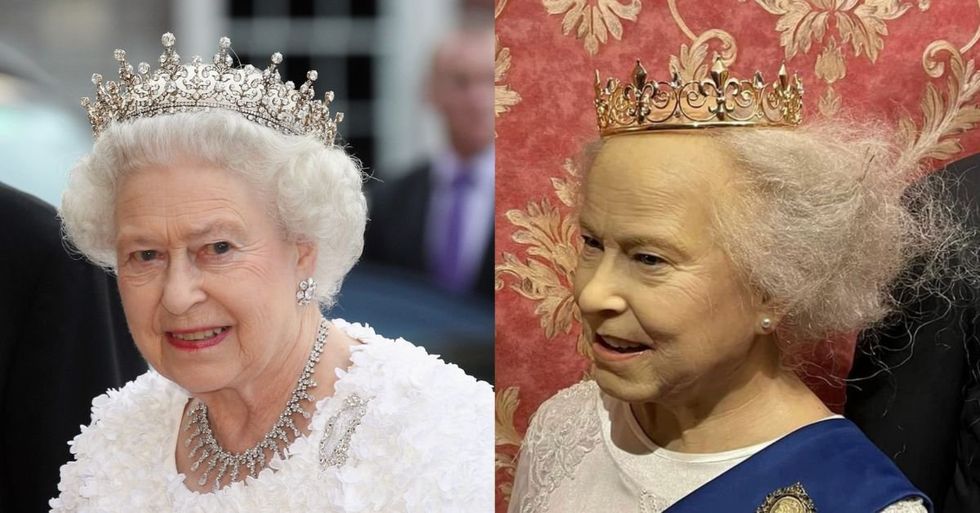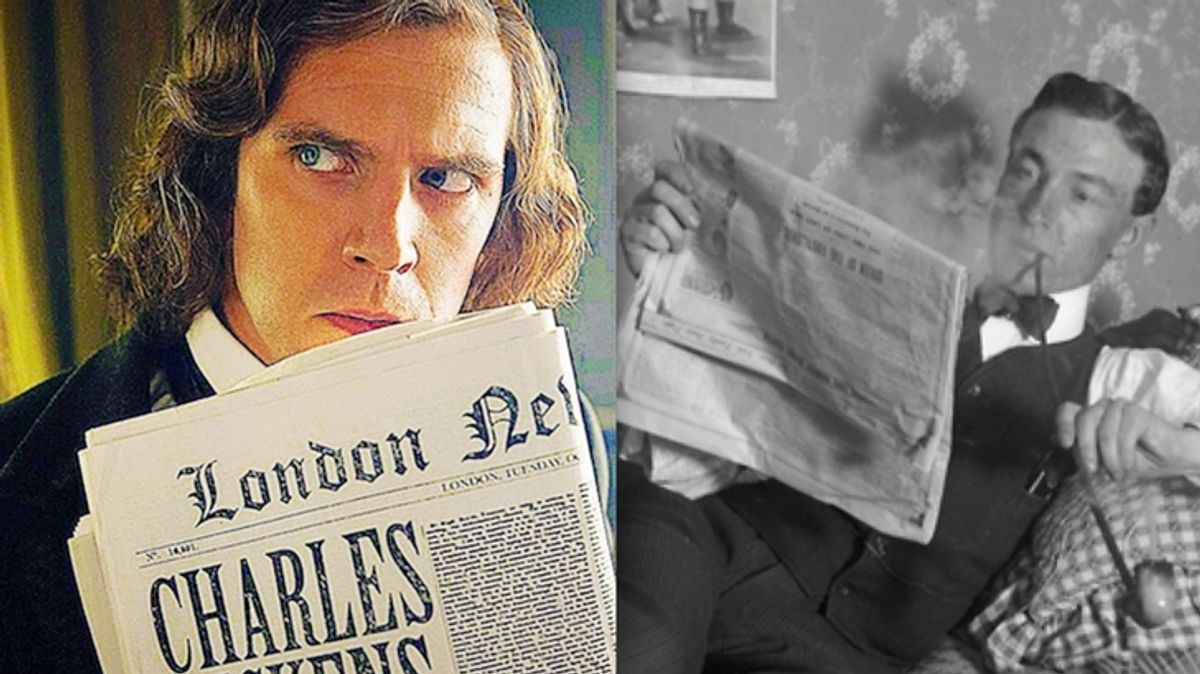The trailer for The Man Who Invented Christmas - the upcoming holiday film about the origins of Charles Dickens's "A Christmas Carol" - forced one man on a Twitter rant because of one annoying detail: the studio didn't authentically represent newspapers from the Victorian era.
Period enthusiast and historian Dr. Bob Nicholson expressed his disdain over the false depiction of newspapers in film and television. "I've just watched the trailer for the new Dickens movie," he tweeted. "I'm not usually bothered by inaccuracies in historical dramas, but I'd like to politely request that filmmakers STOP PUTTING MASSIVE HEADLINES ON VICTORIAN NEWSPAPERS."
Nicholson went on an all-caps tirade that triggered an interesting discussion.
He followed his rant with an example of newspaper template styles during Queen Victoria's reign in Britain - which began in June 1837, through her death in January 1901. Papers circulating during that time consisted of a front page, an advertisement page, articles, police court reports, and classified section.
Actor Dan Stevens, who plays Charles Dickens in the new movie, is seen holding a newspaper with a glaring headline that perturbed the historian. To justify his grievance, Nicholson provided examples of authentic Victorian print work.
For most of the nineteenth century, the biggest daily newspapers carried nothing but densely-packed adverts on their front page. Here are some examples from around the time this film is set...
According to the Victorian Era website, "Information regarding the date of the newspaper, its price, the edition number was printed on the first page along with the name of the newspaper. The Manchester Chronicle had no headline news or images on the first page instead Situations vacant occupied the front page as it job was of utmost importance to the people."
News stories were published in a "factual way" without the editor's commentary, and reports were kept brief due to lack of space in addition to the typesetting process.
Nicholson wasn't alone in his frustration. One user commiserated by complaining about the lack of authenticity in BBC's Ripper Street.
Nicholson was cautious not to generalize about all printed papers from the era.
And though he understands it's convenient for the audience to recognize plot points through visual aid, Nicholson emphasized that the authentic details are just as important as the narrative it's serving.
I know these props serve a convenient narrative purpose, but media history matters too! The ‘newspaper’ as we know it evolved, piece-by-piece, over many centuries and went through countless transformations on the way.
An article in 99% Invisible interestingly highlighted the role of graphic artist Annie Atkin, who specializes in duplicating graphic signage in period film and television. For Atkins, it's a challenge as an artist to find a balance between satisfying the audience's expectations and providing a "historical reality."
"If you need to tell the audience that there’s a war being fought … you can show a newspaper headline saying there’s a war on,” Atkins said, as an example of how studios can save money on graphics instead of filming the war footage in this case.
Instead of focusing on the historical inaccuracy of graphic design, “The attention of the audience should really be on the drama that’s unfolding between the characters,” she explained. “I think you should notice it but only subconsciously. We are building a world and we’re using graphic design to do that. But the pieces are so fleeting I don’t think you should really register everything consciously.”
With The Man Who Invented Christmas, the misrepresented paper shown in the trailer did not go unnoticed. And Nicholson is bracing himself to police the next movie.
Please SHARE this with your friends and family.
H/T - twitter, 99percentinvisible, victorianera
 COMICSANDS
COMICSANDS percolately
percolately georgetakei
georgetakei secondnexus
secondnexus george's picks
george's picks












